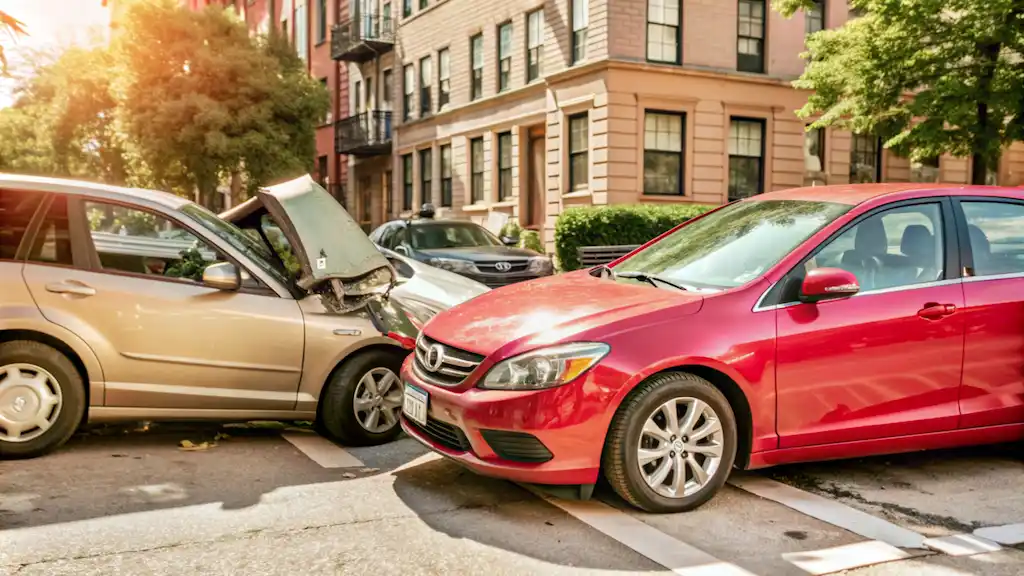The Bronx moves fast, so does its traffic. In 2025, residents are facing a familiar but evolving reality: more complex car accidents, heavier pedestrian risks, and insurance disputes that rarely resolve on their own. Strong, local representation matters. Bronx Personal Injury Lawyers who understand the borough’s streets, courts, and medical networks can make the difference between a stalled claim and a full recovery. Firms like Sakkas, Cahn & Weiss, LLP bring the combination of trial readiness and negotiation strategy that today’s cases demand, especially as new data and court practices reshape how claims are valued and resolved.
Surge in traffic collisions and pedestrian injuries across the Bronx
Traffic volume has rebounded since the early pandemic years, and with it, crash exposure. While final 2025 tallies will come later, New York City’s open-data trends through late 2024 show persistent hot spots along the Major Deegan, Cross Bronx Expressway feeders, and busy pedestrian corridors like Fordham Road, Third Avenue, and the Hub. Early 2025 reports from community boards and local precincts suggest the same patterns: speeding on wide arterials, left-turn conflicts at multi-lane intersections, and delivery congestion increasing risk for cyclists and walkers.
Two dynamics stand out:
- Pedestrian risk at twilight and evening hours, when glare and visibility issues collide with rush-hour impatience.
- Multi-vehicle chain-reaction collisions near merge points, especially in construction zones and around abrupt lane closures.
For injured Bronx residents, these facts matter because they influence liability analysis. Intersection camera footage, MTA bus telematics, and nearby storefront video can corroborate fault in ways a simple police report can’t. Experienced Bronx Personal Injury Lawyers know how to secure and preserve that data quickly. They also understand local roadway nuances, like signal timing quirks or poorly marked crosswalks, that can strengthen negligence claims.
It’s not just drivers. Pedestrians and micromobility users (e-bikes, scooters) are increasingly pulled into complex multi-party claims with commercial insurers and municipal entities. The legal takeaway in 2025: gather evidence immediately, map the crash against known trouble spots, and anticipate comparative negligence arguments from insurers seeking to chip away at damages.
How 2025 case data influences damage-evaluation benchmarks
Claim valuation isn’t guesswork, it follows patterns in recent verdicts and settlements. As 2025 progresses, practitioners are refreshing their benchmarks with new outcomes from Bronx and neighboring counties. Even if not all decisions are published, counsel track ranges for categories like past-and-future medicals, wage loss, and pain-and-suffering across injury types (e.g., cervical fusion, rotator cuff repair, tibial plateau fractures, mild TBI with persistent post-concussive symptoms).
What’s shifting in 2025:
- Cost-of-care inflation: Facility fees, implant costs, and post-op therapy rates have risen, pushing up economic damages and often moving “policy-limit” conversations earlier.
- Jury sentiment on visibility tech: Juries are more receptive to arguments involving dashcam, telematics, and vehicle ADAS data, which can make liability clearer, and, in turn, bolster non-economic awards.
- Comparative fault calibration: Insurers are leaning harder on partial-fault narratives for pedestrians and cyclists. Attorneys counter with human-factors testimony and local road-design evidence.
Firms like Sakkas, Cahn & Weiss, LLP incorporate this live data into their evaluations and mediations, citing up-to-date verdict analytics and medical cost projections specific to the Bronx market. That sort of grounded benchmarking helps clients avoid lowball offers and anchors negotiations in real-world numbers a court is likely to accept.
Medical-expense documentation as the foundation of injury claims
Medical records are the spine of a personal injury case. In 2025, documentation isn’t just about collecting charts, it’s about building a narrative of causation, necessity, and future need.
Key components that strengthen Bronx auto and pedestrian claims:
- ER and initial evaluations that clearly tie symptoms to the crash, ruling out notable pre-existing conditions where possible.
- Diagnostic imaging (MRI/CT) interpreted by treating specialists, not just radiology templates. Detailed operative reports and implant logs are invaluable.
- Consistent therapy notes documenting objective progress, setbacks, and functional limits tied to work and daily living.
- Life-care plans for serious injuries that estimate future surgeries, home modifications, DME, and attendant care.
Gaps in care remain a favorite insurer attack. Attorneys combat this by documenting transportation barriers, insurance authorization delays, or medical advice to pause therapy (e.g., due to swelling or pregnancy). For Bronx residents, language access and referral networks matter too, lawyers who coordinate with local providers can streamline continuity of care. When counsel such as Sakkas, Cahn & Weiss, LLP organizes medical-legal packets early, combining bills, CPT codes, lien statements, and narrative summaries, claims tend to move faster and settle for figures that reflect true need, not spreadsheet shortcuts.
Understanding uninsured and underinsured-motorist coverage disputes
Uninsured Motorist (UM) and Underinsured Motorist (UIM) claims are rising as more crashes involve either hit-and-run drivers or policies that don’t match today’s medical costs. New York’s SUM (Supplementary UM) coverage can be a lifeline for Bronx residents, but 2025 disputes show familiar friction points:
- Notice and cooperation clauses: Carriers deny or delay, alleging late notice or insufficient cooperation. Detailed timelines and prompt EUO preparation counter this.
- Stacking and offsets: Questions about whether multiple policies apply (household vehicles, resident relatives) or how no-fault and workers’ comp payments offset UIM recoveries.
- Liability thresholds: Insurers sometimes argue the tortfeasor wasn’t “underinsured” once exclusions apply. Policy wording and recent appellate decisions are decisive here.
- Arbitration vs. litigation: Many SUM disputes head to arbitration. Lawyers must curate evidence as if for trial, medical proof, wage records, and liability materials, because arbitrators scrutinize causation and damages closely.
Bronx Personal Injury Lawyers familiar with SUM intricacies can locate hidden coverage (umbrella, ride-share endorsements) and coordinate tenders from the at-fault carrier before turning to UIM. Firms experienced in this niche also anticipate bad-faith leverage points when adjusters stall without a defensible reason.
Pre-trial mediation strategies reducing backlog in local courts
Like many urban jurisdictions, Bronx courts have worked through a significant post-pandemic backlog. In 2025, pre-trial mediation is doing real work to move cases, especially auto and premises-liability matters, off crowded calendars.
What’s proving effective:
- Early neutral evaluation with curated briefs: Short, evidence-dense submissions that include key photos, excerpts of treating notes, and verdict comparables put pressure on adjusters to value cases fairly.
- Phased negotiations: Starting with economic losses (medicals, wages) to anchor numbers before discussing non-economic damages can reduce posturing.
- Conditional brackets: Agreeing to settlement ranges tied to immediate documentation delivery (e.g., updated CPT-coded billing: final therapy discharge notes) cuts delays.
- Mediation-ready experts: Having a treating physician or biomechanical expert on standby, even for a brief call, can break impasses over causation.
Sakkas, Cahn & Weiss, LLP often approaches mediation as if it were a mini-trial: exhibits pre-marked, liability theories sharpened, and witnesses identified. That posture signals readiness to try the case if needed, which, ironically, often drives better settlements and trims the court backlog without sacrificing value.
Attorney collaboration with medical experts for stronger testimony
Jurors and arbitrators respond to clear, credible medical storytelling. In 2025, collaborations go beyond “doctor letters.” Effective teams co-develop timelines, graphics, and testimony that translate complex injuries into everyday impact.
Best practices that Bronx lawyers are using:
- Pre-deposition huddles with treating surgeons to align on mechanism-of-injury and differential diagnosis. Consistency across records, testimony, and demonstratives avoids confusion.
- Visuals: Anatomical models, annotated MRIs, and day-in-the-life videos that tie pain behaviors to objective findings.
- Functional testing: FCEs and validated outcome measures (e.g., PROMIS scores) to quantify limitations instead of relying solely on subjective reports.
- Traumatic brain injury clarity: Neuropsychological testing linked to imaging (when present) and symptom validity measures to withstand insurer IME critiques.
When counsel like Sakkas, Cahn & Weiss, LLP loop in experts early, they’re not just prepping for trial, they’re shaping the settlement conversation. Well-prepared medical testimony often narrows disputes to a realistic range and reduces the risk of surprise at trial.





